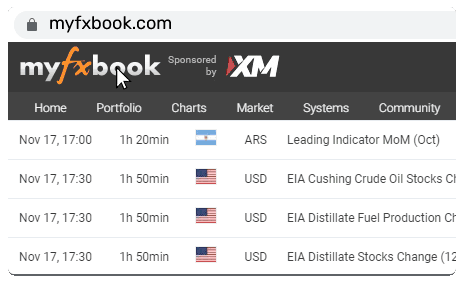How You Can Trade the NZDCAD From the Monetary Policy Divergency

The recent inflation data from New Zealand and Canada has triggered notable movements in their respective currencies, the NZD and CAD. While both countries experienced a slowdown in inflation, the market response has been different. The NZD has come under pressure due to more aggressive rate cuts expected from the RBNZ, while the CAD has shown resilience, with BoC maintaining a steadier approach despite similar economic conditions. This divergence creates opportunities in the NZD/CAD pair, so let’s break it down how you can trade the NZDCAD, first let’s have a look at the New Zeeland and Canda recent releases on the inflation follow up on the react that both currencies have had and then looking ahead how can we position yourself into the market.
New Zealand Dollar and Inflation:NZD Decline: The NZD fell following the release of the latest CPI report, which showed that inflation in New Zealand slowed more than expected in Q3, with annual inflation dropping to 2.2% (down from 3.3% in Q2). Source: Finlogix Economic CalendarDomestic Inflation Drivers: The slowdown was driven by domestic factors, particularly non-tradable inflation (which reflects goods/services that aren't subject to international trade). Non-tradable inflation fell to 4.9%, below the Reserve Bank of New Zealand's (RBNZ) forecast.RBNZ Outlook: The RBNZ is likely to accelerate its rate-cutting cycle, potentially reducing rates by another 50 to 75 basis points in November, as inflation pressures ease domestically.Future Impact: This more aggressive monetary policy stance could weigh on the NZD's performance in the near term.NZDCAD Chart H1 Source: Finlogix Charts Canadian Dollar and Inflation:CAD Movement: While inflation in Canada also surprised to the downside, the negative impact on the CAD was less severe. After an initial rise in USD/CAD, the CAD recovered.Inflation Data: The headline inflation in Canada slowed to 1.6% in September, and core inflation measures also eased. With inflation well below the Bank of Canada's (BoC) target, the central bank is expected to cut rates in upcoming meetings.Outlook for CAD: Despite weakening fundamentals, the CAD has shown resilience, particularly as oil prices have dropped. The Canadian rate market is pricing in larger rate cuts in response to the inflation slowdown.React to Inflation Surprises in New Zealand and CanadaGlobal currency markets have experienced significant shifts following the latest inflation reports from New Zealand and Canada. The New Zealand dollar (NZD) experienced a notable decline as inflation in the country slowed more than anticipated, signalling a potential shift in the central bank's policy direction. In contrast, the Canadian dollar (CAD) showed resilience despite a similar trend of weakening inflation pressures.
New Zealand Dollar Under PressureThe release of New Zealand’s third-quarter Consumer Price Index (CPI) data revealed that inflation had fallen back to 2.2% year-on-year, a sharp decline from 3.3% in the previous quarter. This marks the lowest level since early 2021 and brings inflation within the Reserve Bank of New Zealand's (RBNZ) target range of 1-3%. The slowdown was largely driven by domestic economic factors, with non-tradable inflation—covering items like housing and local services—easing to 4.9%.
The central bank had anticipated a drop in inflation, but the extent of the decrease has opened the door to more aggressive monetary easing. With the current policy rate still elevated at 4.75%, market analysts are now predicting a more substantial rate cut at the upcoming November meeting, possibly by 50 basis points or more. This would build on the larger-than-expected rate reduction introduced at the last policy meeting, as the RBNZ seeks to stimulate the economy amidst slowing price pressures.
The potential for further rate cuts adds downside risk to the New Zealand dollar, which has already been retreating against major currencies. Investors are factoring in the possibility that the central bank will continue its accommodative stance well into the next year, which could weigh on the NZD’s value.
Canadian Dollar Shows Resilience Amid Inflation Decline
In Canada, the inflation rate also surprised to the downside, with headline CPI slipping to 1.6% in September, the lowest since February 2021. Core inflation metrics, which exclude more volatile components, also indicated a cooling in price pressures. The Bank of Canada (BoC), like its New Zealand counterpart, is expected to accelerate its rate-cutting cycle in response.
Despite the inflation slowdown, the Canadian dollar has shown relative strength, recovering from early losses triggered by the CPI report. One reason for this is the CAD’s strong performance in recent months, which may have already priced in the weaker economic fundamentals. Additionally, while oil prices fell sharply, the Canadian currency’s resilience suggests that investors still see it as a stable option amid global uncertainties.
The BoC is expected to follow through with rate cuts at its upcoming meetings, potentially opting for larger reductions of 50 basis points as inflation remains below target. However, the CAD’s performance going forward will likely be influenced by both domestic monetary policy and external factors such as commodity prices and global market sentiment.
Both the New Zealand and Canadian central banks are expected to continue loosening monetary policy as inflation eases. However, the market response has been different for each currency. The New Zealand dollar faces mounting pressure due to the potential for more aggressive rate cuts, while the Canadian dollar has remained more stable despite similar economic challenges. As both countries navigate through changing inflation dynamics, their currencies will likely remain sensitive to shifts in monetary policy and global economic conditions.
Based on this fundamental analysis, we understand that the NZD is weaker compared to the CAD due to a slowdown in New Zealand's economy, with the RBNZ leaning towards more aggressive rate cuts, leading to monetary easing. In contrast, despite facing a similar deflationary scenario, the BoC has been more resilient, which strengthens the CAD.
Currently, NZD/CAD is holding steady at 0.83450. We see potential to target an accumulation around the 0.8200 level, with a possibility of a rapid decline once the support at 0.82870 is broken. This presents a strong risk-to-reward opportunity.
For more detailed stop-loss (SL) and take-profit (TP) levels, you can find my trade analysis on Finlogix through this link: https://www.finlogix.com/analysis/20241017/short-nzdcad-4271
This content may have been written by a third party. ACY makes no representation or warranty and assumes no liability as to the accuracy or completeness of the information provided, nor any loss arising from any investment based on a recommendation, forecast or other information supplies by any third-party. This content is information only, and does not constitute financial, investment or other advice on which you can rely.



















